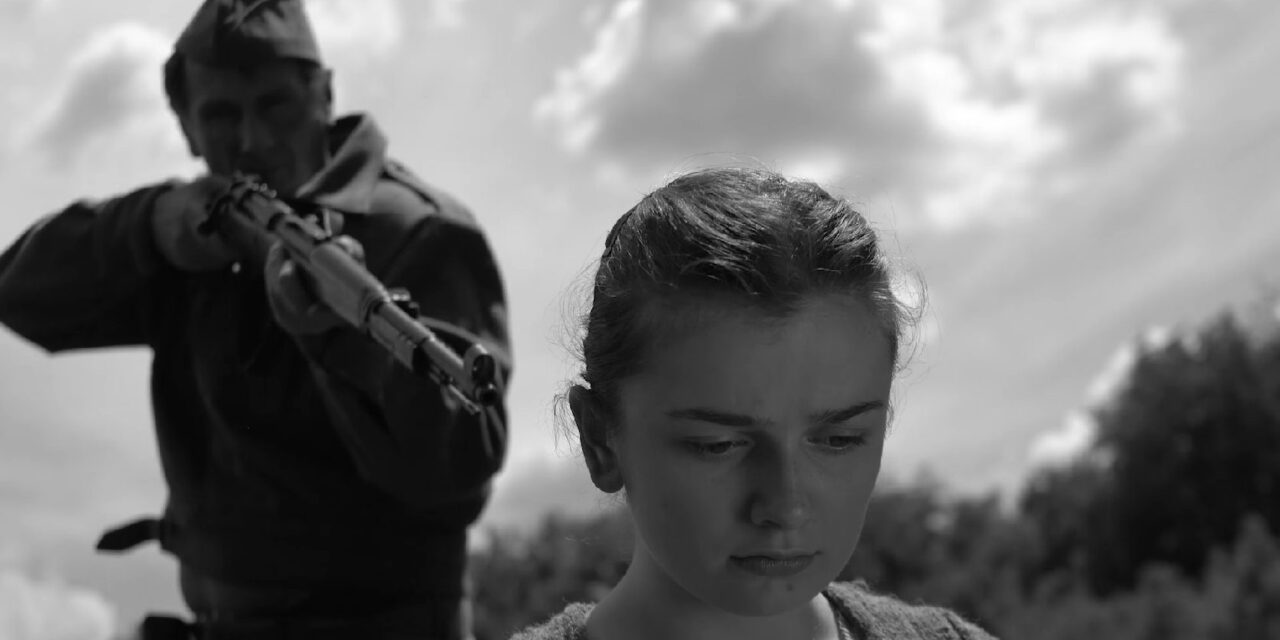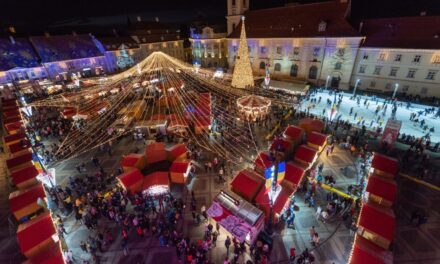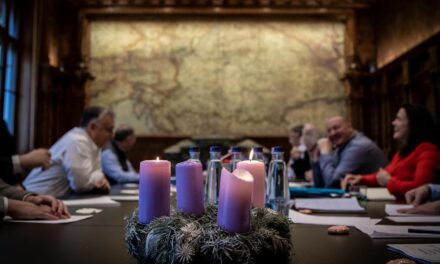Their story has a special resonance today, when it was said in Bratislava: "it is not right for Slovakia to have a prime minister of Hungarian nationality".
Exactly 78 years ago, on the night of June 18-19, 1945, 267 Hungarian and German residents of the highlands, including 75 children, were massacred near the town of Přerov in Moravia. It was their "sin" that they were Hungarians or Germans.
"They were shot dead from a distance of one meter, with a shot in the back of the head, so the victims fell into the dug trenches. The women who held their babies or small children in their arms, those
they shot dead together, a child and a woman"
- this is how the Czech historian and museologist Frantisek Hýbl recalled the execution of the 267 Hungarian and German civilians who were murdered by the soldiers of the 17th infantry regiment of the Czech army in peacetime after the weapons of the Second World War had been silenced.
War after peace
The murder of the German and Hungarian residents was part of an armed action covering the entire territory of the newly formed Czechoslovak state, the preparation of which began in December 1943 in Moscow by the Czech politician Eduard Beneš.
Beneš, "the only president who resigned twice and was elected once", as the writer Sidonia Dedina put it, presented himself as the first man of the Czechoslovak state despite the fact that he resigned from office on October 5, 1938 after the Munich Agreement . In addition to his own ambitions, the fact that he was taken seriously in Moscow was strongly established by the fact that
From 1938, he was an agent of the Soviet secret service.
The politician, who in 1945, months before his rather special re-election, issued decrees for which he did not have the necessary presidential powers, already during his visit to Moscow, when he met with Vyacheslav Molotov, the chairman of the Council of People's Commissars, handed over memoranda on the planned resettlement of Germans and Hungarians . Besides
announced his demand to equip a full army—after the war.
To Molotov's question as to what this Czechoslovak state would need, Beneš said: they were preparing for a civil war, "a partisan war against the Germans."
Mass lynchings
He followed his words with action: from May 1945, as soon as the weapons of the Second World War fell silent, the persecution of the German civilian population began with extremely brutal methods in the re-established Czechoslovakia, especially in the territory of the Czech Republic, which was carried out by the German civilian population in many settlements and in Prague
mass slaughter in broad daylight in the open street,
followed by lynching. The acts that exhaust the concept of genocide were carried out with weapons and ammunition supplied by the Soviet Union.
German and Hungarian residents were murdered in an almost uncountable number of small and large settlements in the Highlands:
it is indicated by about 217 mass graves that have not yet been excavated in the territory of today's Slovakia
the aggressive and declared anti-minority of the returning and re-established Czechoslovak power. The only difference is that these executions mostly took place not in the open street (and not with the "inclusion" of the local population), but near the settlements.
The Germans and Hungarians living in today's Slovakia were practically completely disenfranchised: their education in the national language was stopped for several years from September 1945, and they were even deprived of their right to vote for a while. They were not allowed to use their mother tongue, the use of German or Hungarian on the street was accompanied by serious atrocities and abuse. Their deprivation of rights was based, among other things, on the infamous "Decrees of Benes", which are still in force today.
All this was just preparation for the mass expulsion of the Hungarian population, which took place in 1947. 76,000 Hungarians were forced to leave their homeland as part of the brutal resettlement imposed on the Hungarian state, cynically called population exchange.
Born in Dobsina in Přerov
The storm of history forced the native Hungarian and German-speaking inhabitants of the Highlands to leave their homes en masse in many settlements as early as 1944. It was established in 1939 and is located in the territories that have not returned to the Kingdom of Hungary.
Hitler's Slovak puppet state blindly obeyed the instructions of the German occupiers.
With the approach of the front, the evacuation of the population was also ordered in the eastern parts of the Highlands that remained in Slovak hands. This is how it happened in Dobsina, which was located near the Hungarian border at the time, north of Rozsnyó. Despite the fact that the German and Hungarian residents living here mostly did not want to leave their homes, hundreds of German and Hungarian civilians were deported from the ancient mining town and its surroundings.
In the transport from here to the west, they mostly consisted of entire families. They were mostly residents of Dobsina, and a larger group from Késmár was also deported with them.
The transport assembled in this way, ordered on horse-drawn carts, set off via Bratislava to the northern zones of the Czech Republic. It was annexed to Germany in 1938
they designated their residence in Silesian settlements
(such was the case, for example, of Jiříkov, which was called Georgswalde until 1947 and is today located on the Czech-German border). The families also took with them many of their movable goods.
About a month and a half after the end of the Second World War, a convoy of 267 people, consisting mainly of Germans and Hungarians from Dobsina, as well as Germans from Késmárki, was given permission to load their remaining belongings onto a train and finally set off for home. However, their train was stopped in the middle of Moravia, near the town of Přerov, by a military unit, the 17th Infantry Regiment of the 4th Czechoslovak Army.
One of the most terrible nights in history
The regiment was on its way from Prague to Bratislava to take over the custody of the camp in Bratislava for Hungarian and German families displaced from Bratislava.
The two trains, both bound for Bratislava, stood side by side at the railway station in the town of Přerov on June 18. It is not yet clear whether the meeting of the two trains happened by chance or was a deliberately prepared action. In any case, it is strange that among the soldiers there were also many people from Dobsina - and it was not necessarily in their interest for the owners of the valuable properties to return to their homes.
The commander of the 17th infantry regiment, Karol Pazur, immediately began to terrorize the Hungarian and German passengers of the train with his soldiers, de-fascistizing and intimidating them, and then ordered the rerouting of the train of the returning Dobsina residents outside the city, to the station of the settlement of Lovesice. Families heading home arrived here with a designated section of the 17th infantry regiment under the strict supervision of the soldiers.
Here, Pazur had all the passengers of the train, all 267 people, who were first driven towards a nearby small settlement, and then, turning around, they marched their prisoners to an abandoned plateau in the hilly area near Lovesice, to the Swedish Ramparts.
In addition to a total of 75 children, including many babies sitting on arms, there was also a 90-year-old woman in the procession.
Among the victims were some people of Slovak nationality who also intended to return home, according to some sources, from the railway staff, and even a Russian woman with Soviet citizenship who lived in Dobsina with her Hungarian husband.
On the plateau, Pazur dug a huge, long pit with the men of Lovasice, whom he threatened with execution when they refused to do the work. The excavated,
Into a pit 17 meters long, 2 meters wide and 2 meters deep
from midnight, from June 18 to 19, 1945, all 267 women, children and elderly people were shot.
Hero of the anti-Nazi resistance movement
Infernal scenes took place on the night of the execution of the small and large families. Pazur personally shot several babies with his pistol. Pazur was formally detained by the Soviet authorities after the massacre (apparently so that the massacre carried out by the army could later be labeled as "exaggeration"), but the officer was nevertheless later promoted. After the investigation of his actions, he was imprisoned for a short time, but after the communist takeover in 1948
Bedřich Reicin, a former agent of the NKVD, was soon released under pressure from the Deputy Minister of National Defense.
During his later career, as a "hero of the anti-Nazi resistance movement", lucrative government positions awaited Pazúr in socialist Czechoslovakia, where he received a number of awards.
The victims are the soldiers
he was not only murdered, but also robbed.
The regiment then continued from Přerov to Bratislava. (More mass murders were committed at Pozsonyligetfalu, also by robbing the victims, we will write about this in more detail in our next article.)
According to eyewitnesses, only 30 centimeters of earth spread over the victims moved for three days, since not all of them died immediately from the shots.
The past was erased in a crematorium
Even the remains of these 267 people could not rest in peace. Since the mass murder in Czechoslovakia began to be talked about in 1947, the authorities saw it as better to hide the traces. On October 8-9, 1947, people from the state security agencies and the Terezín military dug up the mass graves. The men were buried in an unmarked mass grave in the Přerov cemetery. The remains of the women and children were placed on a truck, and the corpses were burned in a crematorium in Olmütz to completely destroy the evidence of the genocide.
When destroying the remains of the victims,
In 1947, the smoke of crematoria rose again in the middle of Europe.
The Czechoslovak communist regime that came to power in early 1948 treated the terrible genocide - just like the mass murders committed by the soldiers of the regiment a few weeks later at Pozsonyligetfalu - as a state secret. Many high-profile leaders of the dictatorship with close ties to the Soviet regime were involved in the case. Their careers even rose to the presidency (Gustav Husák, Ludvík Sloboda) or the general staff of the Warsaw Pact (Eduard Kosmel).
The fact that what happened was brought to light, among other things
We are grateful to the Czech historian Frantysek Hýbl, a former employee of the Přerov city museum.
With incredible courage and perseverance (unknown persons even committed an explosion at one of his fact-finding exhibitions), Hýbl literally dug out the physical evidence of the past, which had been treated as a state secret for nearly half a century, from under the ground, uncovering the graves of the victims of the committed genocide.
Those who remember and those who forget
After several decades of strenuous research, Hýbl not only found a mass grave in the Přerov cemetery, which hid the bodies of the male victims, but
in the Olmütz cemetery in 2016, he found traces of the caskets containing the ashes of cremated Hungarian and German women and children.
As a noble gesture, with the support of the city of Olmütz and one of the victims' relatives, the poignant family reunification was carried out: the ashes of the women and children were laid to rest next to the mass graves of the former husbands and fathers in the Přerov cemetery. A memorial plaque was also erected in the Olmützi and Přerov cemeteries; what's more, there is also a memorial at the Přerov cemetery, a decorative tombstone was erected on which the names of the executed can be read. It is also to Hýbl's credit that a huge cross was erected at the Swedish Ramparts, on the site of the executions and the former mass grave. The historian often states that more people were murdered here than the Germans in Lidice.
The stories are not known in Hungary, and the story of the carnage is not sufficiently known in the Highlands either, although part of the Hungarian press in Slovakia usually mentions the massacre.
Neither individuals nor organizations from the Felvidék or Hungary visit the Přerov memorial site,
while relatives of the executed have been regularly coming here from Germany for decades.
Still, it can be said that a slow awareness of what happened has also begun.
This is evidenced, among other things, by the fact that Katalin Szili, as Prime Minister's representative, laid a wreath at the memorial of the Přerov cemetery on March 20, 2022, and handed František Hýbl a certificate of recognition jointly signed with the State Secretary for National Policy János Árpád Potápi, thanking the professor for his steadfast work.
Anthem, from afar
A very significant part of those executed (according to the first estimates, 70 people, but based on later information, it can also be said that at least half of the slaughtered families, i.e. almost 150 people)
either they were native speakers of Hungarian, or they declared themselves to be German, but knowledge of our native language and culture was a defining part of their identity.
A good example of this is that after the collapse of historical Hungary, after the Czech occupation, in Dobsina in 1919, the first "Hymnus trial" in the highlands was held, a procedure initiated due to the singing of the Hungarian National Anthem. And our national prayer was sung by members of the local German community called "buléners".
Featured image: Excerpt from the film Genocide in Pozsonyligetfalun












